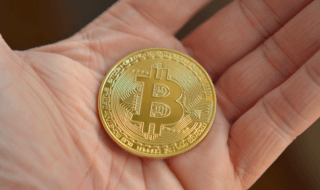The realm of digital transactions and cryptocurrencies, particularly ethereum, is fast-paced and complex. With the increasing popularity of these digital currencies, it’s become essential for users to understand how the system works, including the intricacies of transaction fees and the ethereum mempool. This blog post aims to guide readers through the process of navigating mempool fees for efficient transactions, providing a comprehensive understanding of transaction fees, tools for estimating optimal fees, strategies for fee reduction, and advice on timing transactions for lower fees.

Contents
Understanding Transaction Fees and Gas Prices
In the world of digital currencies, transaction fees are a necessary mechanism for ensuring the smooth operation of the network. These fees serve as an incentive for miners to include a user’s transaction in the blockchain, the digital ledger where all transactions are recorded.
The ethereum mempool, in particular, is a holding area for transactions waiting to be processed. Each transaction in the mempool comes with a fee, known as ‘gas price,’ which is essentially the cost of conducting a transaction or executing a smart contract on the ethereum network. The gas price is usually measured in Gwei (a denomination of ether) and it’s set by the person who initiates the transaction.
Just like in a traditional auction, miners prioritize transactions with higher gas prices. As a result, if a user wants their transaction to be processed quickly, they might opt to pay a higher gas price to make their transaction appealing to miners. Conversely, if a user is not in a hurry, they can set a lower gas price, accepting the possibility that their transaction could take longer to process.
However, understanding these transaction fees and gas prices is not enough. In order to optimize the cost of transactions, users must also be able to estimate the optimal fees and employ strategies for reducing these fees.
Tools for Estimating Optimal Fees
In the dynamic environment of digital currencies, estimating the optimal transaction fee is challenging. However, several tools have been developed to help users navigate this process.
One such tool is Etherscan, which provides a gas tracker that gives real-time data on the average gas price. This tool allows users to gauge the current status of the ethereum mempool and estimate the optimal gas price for their transactions.
Similarly, another tool is ETH Gas Station, which provides comprehensive data about the ethereum gas market. It provides recommendations for gas prices based on the current congestion of the network, allowing users to choose the optimal gas price that balances cost and transaction speed.
These tools, among others, provide valuable insights that can help users estimate the optimal transaction fees. However, it’s also crucial for users to understand the strategies they can use to reduce their transaction costs.
Strategies for Fee Reduction
Reducing transaction costs is a crucial aspect of optimizing the usage of digital currencies. One common strategy for reducing fees is to conduct transactions during times of low network congestion. Since miners prioritize transactions with higher gas prices, conducting transactions when the network is less congested can result in lower transaction fees.
Another strategy is to utilize gas tokens. Gas tokens allow users to ‘tokenize’ gas when the gas price is low and ‘spend’ it when the gas price is high. This can be a cost-effective strategy, especially during times of high network congestion.
Moreover, users can also use advanced features of wallet software, such as fee market bidding. This strategy involves setting an initial low fee and incrementally increasing it until the transaction is processed.
While these strategies can help reduce transaction costs, it’s also crucial to consider the timing of transactions.
Timing Transactions for Lower Fees
In the world of digital currencies, timing is everything. The timing of transactions can significantly affect the associated fees.
Generally, the ethereum mempool is less congested during off-peak hours, which typically result in lower gas prices. Therefore, conducting transactions during these times can lead to lower transaction fees.
Furthermore, monitoring market trends and network congestion can also help in timing transactions. For instance, during periods of high transaction volume, such as during a significant price change in ether, the network can become highly congested, leading to higher gas prices.
In conclusion, navigating mempool fees for efficient transactions involves understanding the dynamics of transaction fees and gas prices, using tools for estimating optimal fees, employing strategies for fee reduction, and timing transactions appropriately. While the world of digital currencies might appear daunting, with the right knowledge and strategies, users can optimize their transactions and navigate this realm efficiently.


